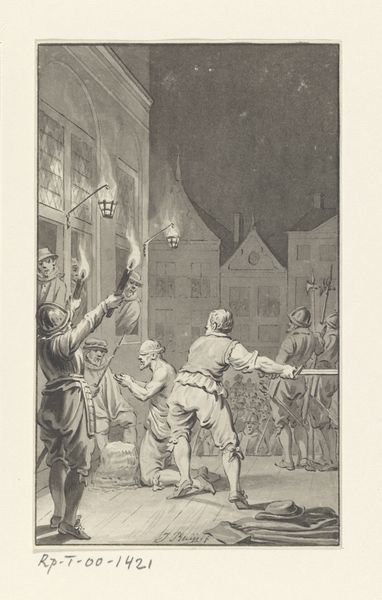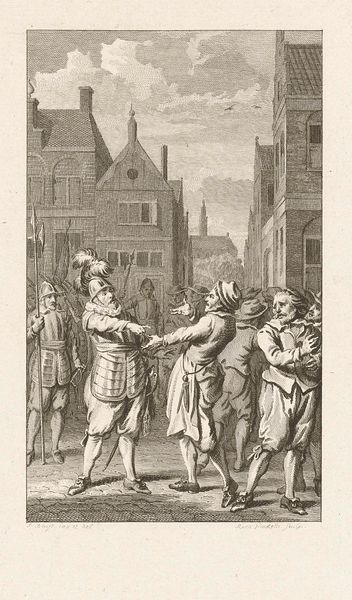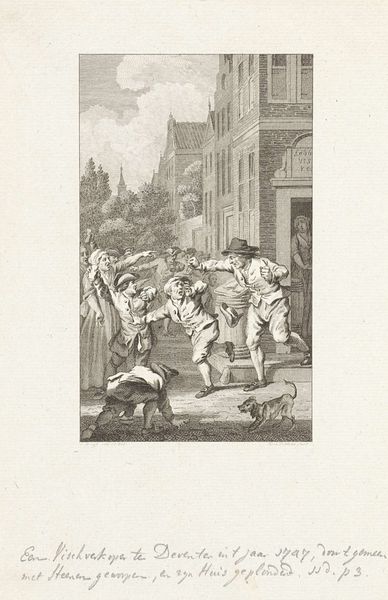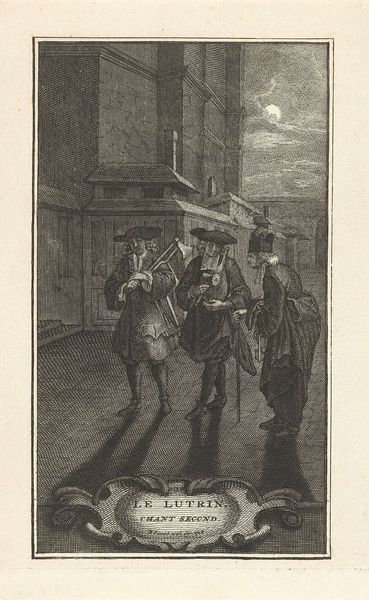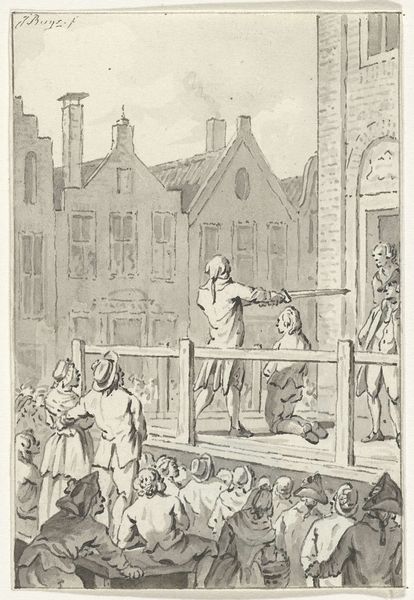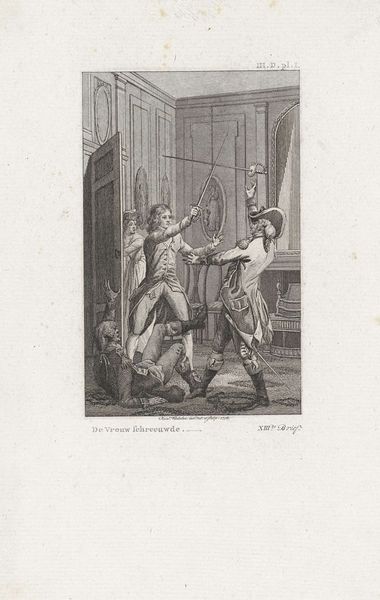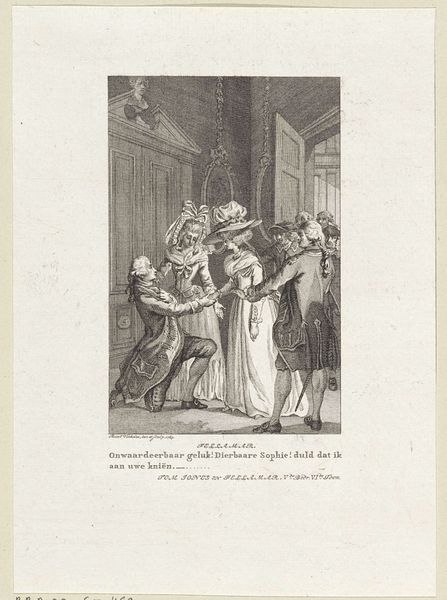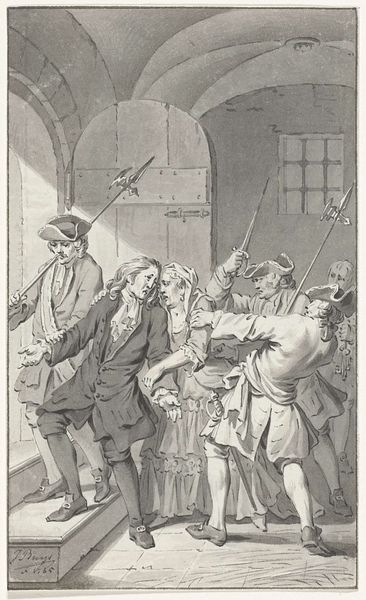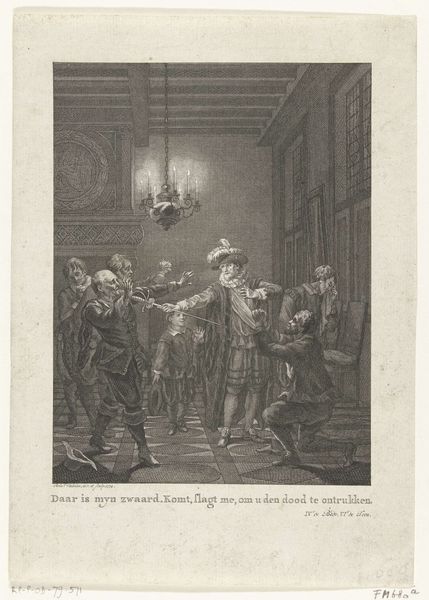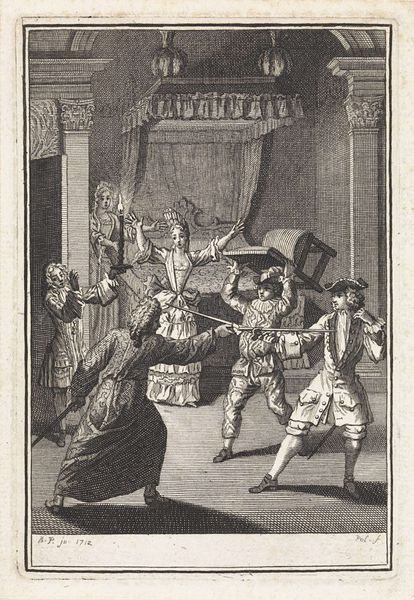
Dimensions: height 222 mm, width 135 mm
Copyright: Rijks Museum: Open Domain
Editor: So, here we have Reinier Vinkeles' engraving, "Onthoofding van Nicolas Gosson te Atrecht, 1578," made in 1787. The scene is, well, quite grim. A public execution by beheading. I’m immediately struck by the crowd’s presence… what story is this engraving trying to tell us? What do you see in this piece? Curator: Indeed, it’s a stark depiction. Beyond the immediate violence, consider this: Vinkeles created this print over two centuries after the event it depicts. How does the distance of time shape our understanding? Is this simply a historical record, or something more? It speaks to power dynamics. Who commissioned it? What message were they trying to convey? Editor: I hadn't thought about the gap between the event and the artwork's creation. So, the context matters as much as the content itself? Is Vinkeles using this historical event to say something about his own time? Curator: Precisely. Think about the political and social upheavals of the late 18th century. The Dutch Republic was on shaky ground. Perhaps this image of public execution served as a reminder, a warning, or even a critique of authority. Also, what does it mean to disseminate it as a print? Who was its intended audience? Did they understand themselves in relation to the crowd pictured? Editor: It’s fascinating to consider how an artwork can become a commentary on different eras simultaneously. Seeing the historical context helps to read between the lines, it’s not just a gruesome beheading. Curator: Exactly. It invites us to question not only the events depicted, but also the motivations and ideologies behind its creation and reception. It reflects anxieties related to order, justice, and power which still reverberate today. Editor: That makes the work much richer and layered than I first perceived. It's definitely given me a new perspective on interpreting historical artworks. Thank you!
Comments
No comments
Be the first to comment and join the conversation on the ultimate creative platform.
